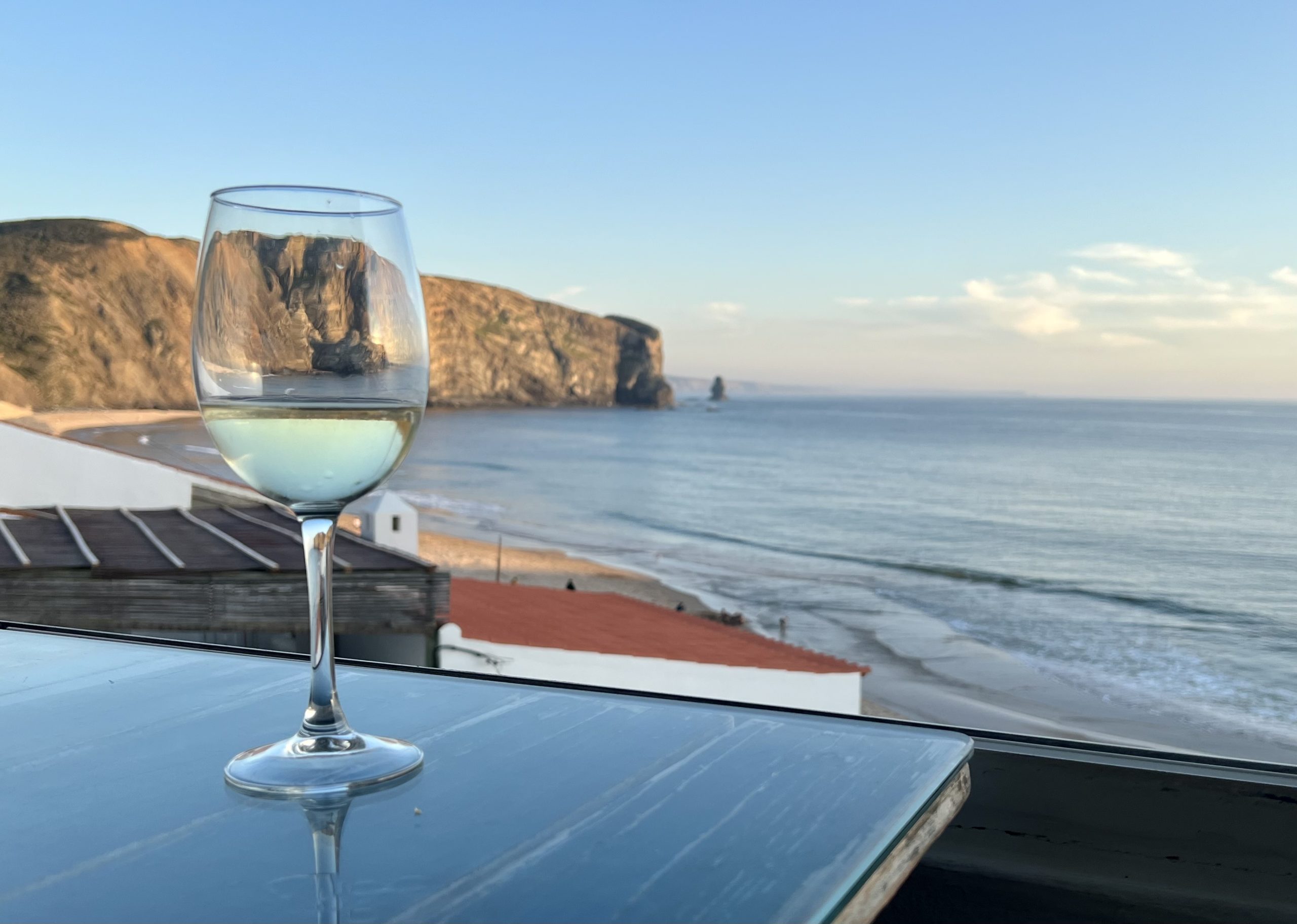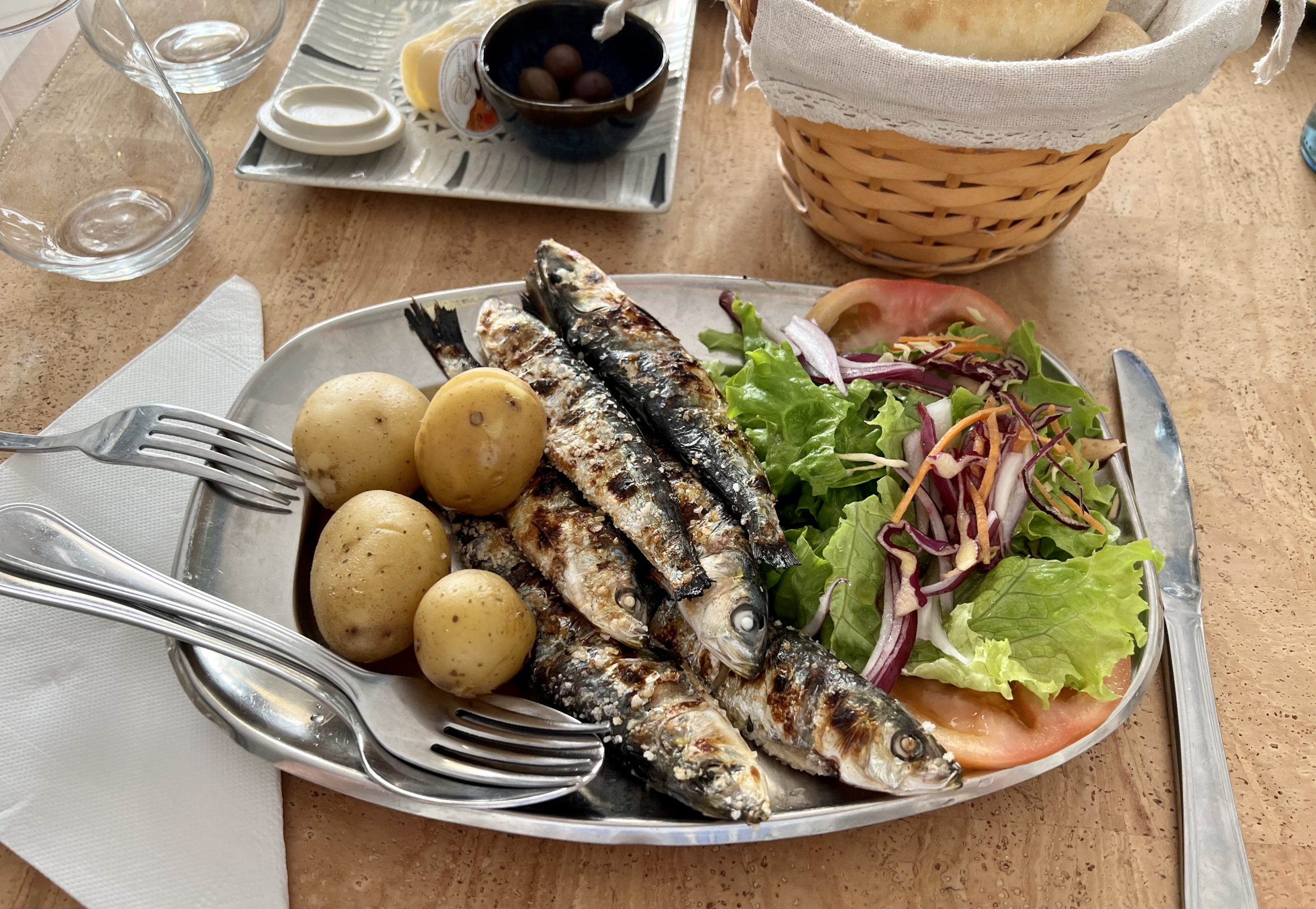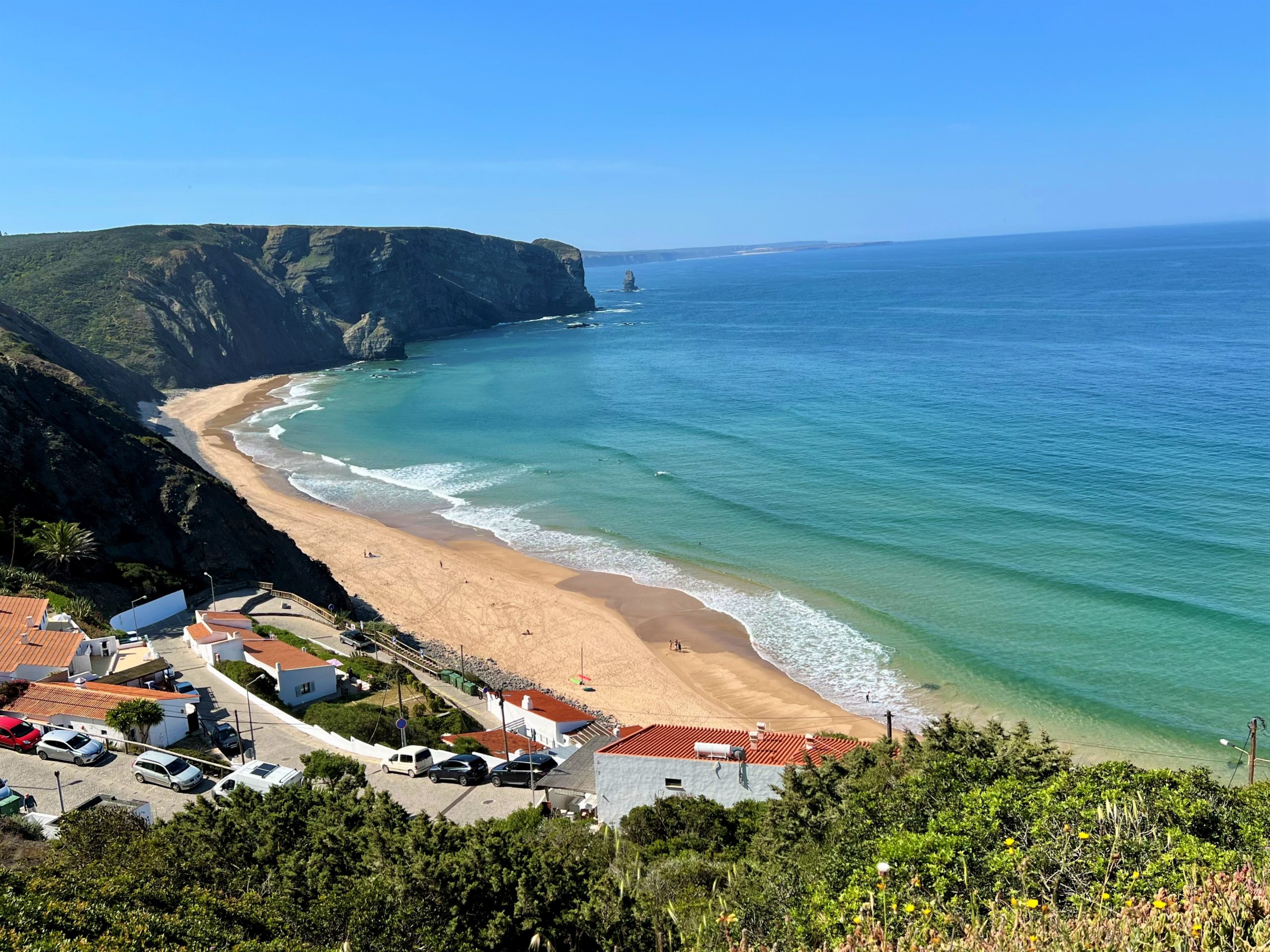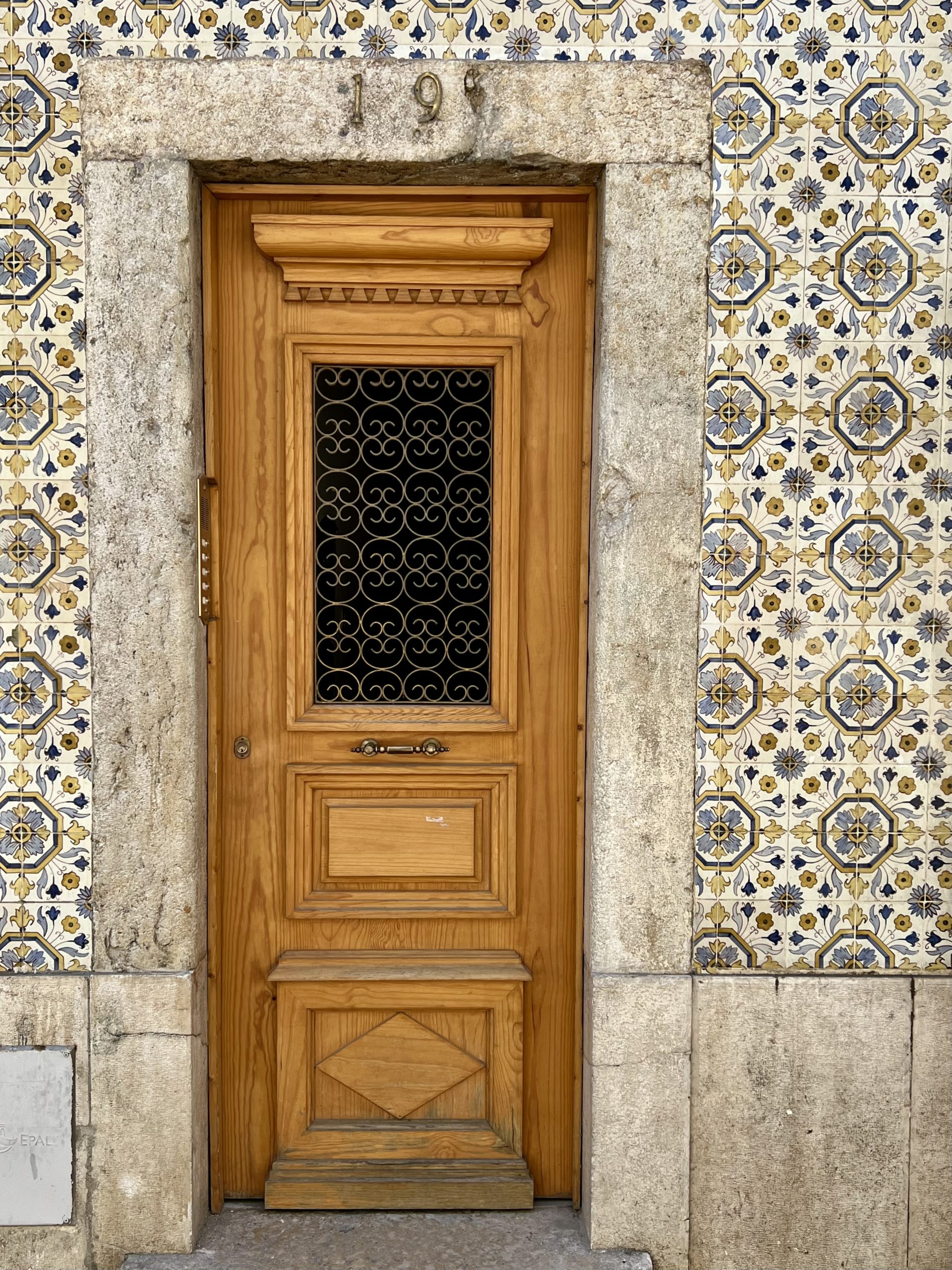Often overshadowed by popular tourist destinations like France and Italy, Portugal is relatively undiscovered when compared to other European destinations. With a long, Atlantic Ocean-facing coastline, diverse culture, and a refreshingly laid-back atmosphere, Europe’s westernmost country offers just as much (if not more) as its neighbors. And at a better price.

Travel to Portugal and enjoy breathtaking beaches, fresh seafood, and world-renowned wine for less than what you’d spend in the rest of western Europe. Because travel to Portugal from the U.S. is quick and easy (and Portugal’s travel restrictions have eased), more Americans are discovering what makes Portugal the “It” destination of 2022.
If you’re wondering why you should visit Portugal this year, here’s a mini Portugal travel guide and four reasons why this country is Europe’s most precious hidden gem:
Port & Green Wine
If you’ve looked into the best things to do in Portugal, you’ve probably learned that sampling the local wine tops many lists. Portugal houses a vibrant wine and vineyard scene and is famously known for producing Port, a fortified wine originating in the Douro Valley near the city of Porto. Served in a special Port glass and in a smaller portion than traditional wine, it’s common to enjoy this sweet digestif after a meal or with dessert. Red is the most common variety, but you’ll also find white Port which has a lighter taste and citrusy flavor that makes it a great warm weather-sipper.

Green wine–AKA Vinho Verde– is another native product hailing from the namesake region in northwest Portugal. This crisp, refreshing, slightly spritzy wine perfectly complements Portugal’s numerous seafood dishes, and is especially satisfying when the weather is hot. Despite popular belief, Vinho Verde gets its name from the region it’s grown in, not for its color (which is white, not green)! Another commonly-agreed upon theory of where the wine and region get its name comes from the short aging process the wine goes through. Typically, Vinho Verde is aged for just 3-6 months and is consumed “young” (i.e., green).
Fresh seafood
There’s no way to avoid seafood during a trip to Portugal, and trust me, you don’t want to. You’ll find local favorites like grilled sardines, whole codfish, octopus and squid salads, and Portuguese style tartares and ceviches on most menus. Whether it’s for brunch, a mid-day lunch, or late-night dinner, you’ll see Portuguese indulging in fresh local catch and a bottle of wine anytime, anywhere. The presentation is simple and most dishes are served condiment-free with small sides of potatoes and vegetables, allowing the natural flavors to really shine. Another must-try dish is arroz de marisco, a hearty rice and seafood stew in a tomato-based sauce with loads of flavor and a subtle spicy kick.

The bonus is the price. While “cheap” would be an overstatement, quality seafood dishes in Portugal are generally much less than what you’d pay for the same thing in the U.S. Seafood appetizers typically start at 5 Euros and entrees run between 12 – 20 Euros.
Undeveloped Beaches
Perhaps the most surprising thing about Portugal’s Algarve region is the lack of development surrounding its beautiful west coast beaches. Known for soft-sand, soaring cliffs, and brilliant blue water, the beaches within Costa Vicentina Natural Park are protected from an overabundance of amenities and accommodations. The majority of beachside abodes along the west coast consist of apartment rentals, AirBnbs, and small guest houses. While you can stay further from the beach in traditional hotels and other accommodations, you won’t find chain hotels, high rise apartments, or any other man-made eye sore obscuring your coastal views.

If you’re looking for a livelier scene in the Algarve, the area between Faro and Lagos is more catered to tourists. Here you’ll find a choice of resorts, hotels, bars, restaurants, and nightlife.
Eclectic culture
Portugal is uniquely positioned in western Europe with an eclectic culture influenced by ancient occupation, border countries, and the neighboring African continent. The Portuguese capital of Lisbon has a distinctly European feel with its cobblestone sidewalks, narrow streets, and cafe culture. However, a closer look reveals obvious Islamic and African influences stemming from the Arab occupation in the 8th-12th centuries, and the Portuguese colonization of Cape Verde, Sao Tome and Principe, Guinea-Bissau, Angola, and Mozambique in the 1500s.

Lisbon, in particular, is a cultural epicenter with a substantial African community and international elements woven into every twist and turn of the city’s hilly streets. From the Moorish-Roman architecture of Saint George’s Castle to the city’s Moorish quarter, signs of Portugal’s colorful history are everywhere. One of Lisbon’s most striking features are the azulejos, hand-painted tiles that adorn storefronts, churches, apartment buildings, public murals, train stations, restaurants, and fountains. While these world-renowned tiles are a cemented piece of Portuguese culture, they were actually introduced under Moorish rule, with the word azulejos stemming from the Arabic phrase az-zulayj, meaning “polished stone.”
And then there’s the cuisine. Grilled seafood dominates the menus, but African restaurants are a popular alternative and serve up hearty Angolan stews and Mozambican coconut curries and chamussas (AKA samosas).
********************************
With its charm, excellent culinary scene, and fascinating history and culture, Portugal is Europe’s best kept secret that won’t fly under the radar for long. Get in touch to discuss visiting this hidden gem in 2022!